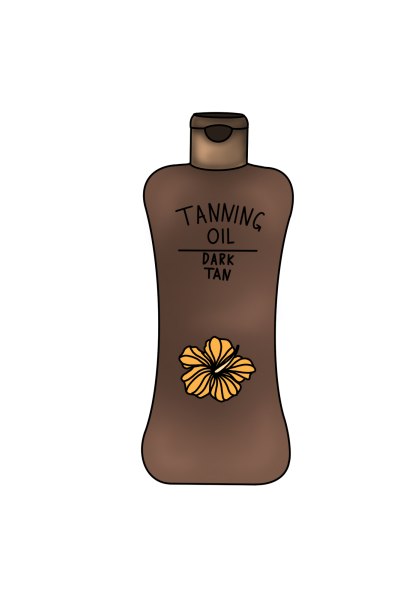The price of protection

Graphic courtesy of istock
Sunscreen. SPF. Sunblock. Whatever you call it, you know about it. Sunscreen is prescribed by dermatologists as the most important part of a skincare routine. According to skincancer.org, daily use of SPF 15 sunscreen can reduce one’s risk of developing squamous cell carcinoma (SCC) by about 40%, and lower one’s melanoma risk by 50%. Thousands of people use this skin protectant religiously, whether it be to prevent skin cancer, wrinkles or for other reasons. If sunscreen is so vital, why is it so ludicrously expensive?
First of all, what is sunscreen, and how does it protect our skin? Sunscreen is formulated with active ingredients that help prevent the sun’s UV radiation from penetrating the skin. Abbreviated as SPF, the Sun Protection Factor indicates how long sunscreen can protect someone until they get burned. It is recommended to be used by everyone who is older than 6 months since baby skin is too sensitive. There are two main types: mineral and chemical. Mineral sunscreens, also known as physical sunscreens, primarily incorporate minerals like titanium dioxide and zinc oxide to scatter and bounce UV rays before they penetrate the skin. They are generally known to be less irritating to the skin than chemical sunscreens, which utilize chemical filters, like avobenzone and octisalate, to absorb UV rays before they cause skin damage.
Dermatologists recommend applying about three fingers worth of SPF 30 or higher to the face and neck, and reapplying every two hours. According to skincancer.org, sunscreen is effective when about 2 mg is used for every square centimeter of skin. For the entire body, it is recommended that one uses about an ounce of product per application. If a person were to follow these recommendations, they would likely reapply about three times a day, which would equate to using about 3 oz of product per day; this is completely unrealistic. Most American sunscreen bottles range from 3 oz to 5 oz, so a person would use a bottle of sunscreen every 1-2 days. Furthermore, sunscreens range from $5 to $40, with affordable sunscreens costing an average of $3 per fluid ounce. So, in theory, the average person would use up to 183 bottles of sunscreen per year, annually spending about $912; this is not very realistic as most people do not have enough money to spend on sunscreen, and will also probably use a lot less than what is recommended.
For something that is apparently a necessity for all, it is certainly not accessible to everyone. To compensate for this, people have to use other methods of SPF such as hats and sun-protective clothing, which is not as practical since most people do not find it very fashionable or comfortable. The high prices of sun protection make it less ideal for the average person to use on a day-to-day basis; this is also resonant with America’s healthcare system. An example of this is the unaffordability of insulin, a diabetes medication that almost 9 million Americans use, according to apnews.com. Despite it being an absolute necessity for sustaining life, an unreasonably significant amount of people have to choose between insulin and rent, which should not be the case.
While there are much more pressing issues that need to be addressed, this must be established: sunscreen is too expensive.












